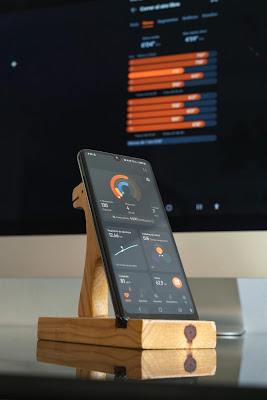The health and fitness industry has seen a surge in the popularity of wearable technology, with fitness trackers becoming a ubiquitous accessory for health-conscious consumers. From the iconic Fitbit to the feature-packed Apple Watch, these innovative devices have revolutionized the way we monitor and manage our physical activity, sleep patterns, and overall well-being.
In this blog post, we will explore the impact of fitness trackers on the wellness landscape, examining how these commercial and popular products are shaping the way we approach our fitness goals and overall lifestyle.
The Evolution of Fitness Tracking
Fitness trackers have come a long way since the early pedometer-based devices. Today's wearables offer a comprehensive suite of features, including heart rate monitoring, sleep tracking, calorie counting, and even advanced metrics like VO2 max and blood oxygen levels.
The Data-Driven Approach to Wellness
One of the key benefits of fitness trackers is their ability to provide users with detailed data on their physical activity and health metrics. By tracking everything from steps taken to calories burned, these devices empower individuals to make more informed decisions about their lifestyle and fitness routines.
Personalized Coaching and Goal-Setting
Many fitness trackers now integrate with mobile apps and online platforms, offering personalized coaching, tailored workout plans, and goal-setting features. This level of customization and support can be invaluable for those looking to achieve specific fitness objectives, whether it's weight loss, muscle building, or improved cardiovascular health.
Well... wrapping up!
The Social Aspect of Fitness Tracking
Fitness trackers have also fostered a sense of community among users, with many platforms allowing for the sharing of progress, friendly competition, and the formation of support groups. This social element can be a powerful motivator, encouraging users to stay accountable and engaged with their fitness journey.
As the fitness tracker market continues to evolve, it's clear that these commercial and popular wearable devices have become an integral part of the health and wellness landscape. By providing users with valuable data, personalized guidance, and a sense of community, fitness trackers are empowering individuals to take a more proactive and informed approach to their overall well-being.
Based on the search results provided, here are some key scientific references about fitness trackers:
1. Validity and Reliability of Consumer Wearable Activity Trackers:
- A 2015 systematic review published in the International Journal of Behavioral Nutrition and Physical Activity examined the validity and reliability of popular consumer-wearable activity trackers. The review found high interdevice reliability for measuring steps, energy expenditure, and sleep, but lower validity for energy expenditure and sleep. [2]
2. Accuracy of Fitness Trackers:
- A 2019 review published in the Journal of Medical Internet Research examined 463 studies on the accuracy of wearable activity trackers. The review identified six key themes in the research, including the accuracy, adoption, and acceptance of these devices. [3]
3. Privacy and Data Sharing with Fitness Trackers:
- A 2021 study published in the Journal of Medical Internet Research investigated the influence of implementing granular privacy control on users' intention to share their fitness tracker information. The study integrated communication privacy management theory with the privacy calculus model. [4]
4. Fitness Tracking and Cognitive Function:
- A 2022 study published in Scientific Reports used fitness tracking data to examine the associations between physical activity, memory, and mental health. The study found task-specific relationships between these factors. [5]
Citations:
[1] https://illumin.usc.edu/fitness-trackers-how-they-work-and-their-highly-anticipated-future/
[2] https://ijbnpa.biomedcentral.com/articles/10.1186/s12966-015-0314-1
[3] https://www.sciencedirect.com/science/article/pii/S1532046419300711
[4] https://www.ncbi.nlm.nih.gov/pmc/articles/PMC8663694/
[5] https://www.nature.com/articles/s41598-022-17781-0





.jpg)

























.jpg)